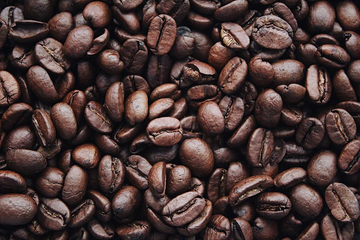Simple answer: NO! Here’s why.
Remember those teenage mornings when we’d wake up with barely enough time to make it to class, yet still reach for the flat iron to get that silky, straight-out-of-an-ad look? We’ve all been there—frantically running a straightener over damp hair, desperate for that glossy finish, only to end up with frizzed-out, fried strands (and not to mention the smoke emitting from the hot tool). Well, girlie, those days are behind us. We’re in our self-care era now, and we’re not about to damage our hair for anyone or anything.
But let’s be real—the temptation to speed things up with a quick straightening session while your hair is still wet can be all too real. Here’s the truth: that sizzling sound and rising steam are not your friends. Straightening wet hair might seem like a shortcut, but it’s a fast track to damaged, brittle locks that’ll have you crying over split ends.
So, what’s the real deal? Why is straightening wet hair a no-go, and what’s the healthier route to achieving those perfect, straight tresses? Let’s break it down, bust some myths, and find the best ways to keep your hair looking STUNning without sacrificing its health. Because nothing, and we mean NOTHING comes before hair care these days.
Why you should think twice before using a flat iron on wet hair
Okay, babes, let’s talk about why straightening wet hair is basically a hair care horror story waiting to happen. We’ve all been there—time crunch, damp hair, and that flat iron is calling your name like it’s the answer to all your problems. But here’s the tea: using a flat iron on wet hair is like turning your strands into a hot mess express.
Here’s why. When your hair is wet, it’s at its most vulnerable. The outer layer of your hair, called the cuticle, is wide open, soaking up all that water like a sponge. Now, imagine pressing a scorching hot flat iron onto those water-filled strands. What happens? The water inside your hair literally boils, creating steam and causing your hair to sizzle. Sounds scary, right? That’s because IT IS!
This boiling effect doesn’t just dry your hair—it actually weakens it. The heat causes the water inside your hair to evaporate super quickly, leading to bubbles forming within the hair shaft. These bubbles might be tiny, but they cause significant structural damage, leaving your hair more prone to breakage, split ends, and that dreaded frizz.
Think about it like this—straightening wet hair is like throwing your favorite silk dress into a fire. Sure, it might seem fine at first glance (or not), but the damage is done, and there’s no going back. And girl, we’re not about that life.
But hey, we get it. Sometimes, life happens, and we need quick fixes. But trust us, straightening wet hair isn’t the answer. Instead, let’s explore some better, healthier ways to get those sleek, straight locks without sacrificing your hair’s health. Because, let’s face it—we’re all about thriving, not just surviving.
The long-term damage—It’s more than just split ends
Now, let’s get into the nitty-gritty of what happens when you repeatedly straighten your hair while it’s wet. Spoiler: it’s not pretty, babes. We’re talking more than just a few split ends or a bad hair day, this kind of heat abuse can lead to long-term damage that’s tough to reverse.
When you apply intense heat to wet hair, you’re not just frying the outer layer. The damage goes deep, affecting the very structure of your hair. Remember those bubbles we mentioned? Over time, they weaken the entire hair shaft, making it more brittle and prone to breaking. And that means more than just a few stray hairs on your brush—it can lead to significant thinning and loss of volume. You know, the kind of damage that has you wondering where your once-luscious locks went.
And let’s talk about texture for a sec. Repeated heat damage can strip your hair of its natural oils, leaving it dry, dull, and lifeless. That silky, shiny hair you’re aiming for? It’s a lot harder to achieve when your hair is parched and frazzled. Plus, if you’ve got any natural curl or wave to your hair, heat damage can mess with that too, leaving you with a weird, uneven texture that’s hard to style. In other words, bye-bye curls, forever.
Oh, and the damage doesn’t stop there, either. Your hair cuticles, the protective outer layer of your strands—get roughed up every time you expose them to high heat, especially when they’re wet. This can lead to raised cuticles that don’t lie flat, meaning your hair won’t reflect light as well. Translation? Say goodbye to that natural shine and hello to dull, frizzy hair that no amount of serum can fix.
Nobody’s got time for hair that’s constantly breaking, thinning, and losing its shine. We’re all about that long-term glow-up, and that means treating our hair with the care and respect it deserves. So, before you reach for that flat iron while your hair’s still damp, remember this—your future self (and your future hair) will beg for you to skip the sizzle.
Myth-busting—Is it EVER safe to straighten wet hair?
It’s now TYME for some myth-busting because we know what you’re thinking—"But what about those wet-to-dry straighteners that claim to be safe for wet hair?" You’ve probably seen them in stores, promising to dry and straighten your hair all at once. It sounds like a dream, right? Well, let’s break it down.
First off, the idea behind wet-to-dry straighteners is that they’re designed with vents that supposedly allow steam to escape, reducing the risk of damage. But here’s the truth: while these straighteners might be *slightly* less damaging than your regular flat iron, they’re still not the best option. Why? Because even with the vents, you’re still applying intense heat to wet hair, and that means you’re still boiling the moisture inside your strands.
Plus, those “protective” vents? They don’t always work as perfectly as advertised, just ask the 20-dollar price tag. If your hair is too wet, or if you’re not using the tool exactly right, you could still end up with frizz, breakage, and long-term damage. And let’s be honest—who’s got time to perfectly master a tool that’s already risky?
Another myth that needs busting? The idea that certain hair types can handle the heat better. Whether your hair is thick, fine, curly, or straight, the basic structure is the same. Sure, thicker hair might not show damage as quickly as finer hair, but that doesn’t mean it’s not happening beneath the surface. Every hair type is vulnerable to the same boiling, bubbling process we talked about earlier.
Let’s put this one to rest. No matter what your hair type or what kind of fancy straightener you’re using, straightening wet hair is never a good idea. It’s a shortcut that comes with a hefty price tag in the form of damaged hair, and we’re not about that life.
Don’t worry, babe—we’ve got safer, smarter ways to get that sleek, straight look you’re after, without sacrificing your hair’s health. Keep reading, and we’ll show you how.
How to safely achieve sleek, straight hair without the risk
Now that we’ve established why wet-to-straight isn’t the move, let’s talk about how you can still get that silky, straight hair without sacrificing your locks to the heat gods. Because, girl, you deserve to have it all—gorgeous, healthy hair that shines like a dream. Here’s your step-by-step guide to straightening your hair safely:
1. Always start with dry hair
Patience, babes, this is key. We’ve all been tempted to rush the process, especially when you’re trying to get ready in the morning, but starting with dry hair is the golden rule. If you’re really in a time crunch, here’s how to speed up the drying process without sacrificing hair health:
– Quick blow-dry with care: Before reaching for your flat iron, grab your blow dryer. But don’t just blast your hair with heat—use a medium heat setting and a wide-tooth comb to gently detangle as you dry. This preps your hair by smoothing it out, making it easier and quicker to straighten.
– Heat protectant spray is a NEED: This step is non-negotiable, girlie! A good heat protectant spray is your hair’s best friend. It forms a protective barrier around each strand, minimizing damage from high temperatures. Make sure to spritz it evenly across your hair, focusing on the ends where damage tends to be the most visible.
– Let your hair air-dry (if you have time): For those days when you’re not in a rush, air-drying is the healthiest option. You can apply a leave-in conditioner or a smoothing cream to help reduce frizz as your hair dries. Trust me, your hair will thank you for this extra bit of TLC.
2. Choose the right tools
Next up, let’s talk about your tools. Not all flat irons are created equal, and if you’re serious about keeping your hair healthy, it’s worth investing in a high-quality straightener with adjustable heat settings. Look for one with ceramic or tourmaline plates, which distribute heat more evenly and reduce the risk of hot spots that can fry your hair. And remember, lower is better when it comes to temperature. Cranking up the heat might seem like it’ll get the job done faster, but it’s also more likely to damage your hair in the long run. Aim for the lowest temperature that still gives you the results you want.
3. Work in sections
I know it’s tempting to grab a big chunk of hair and just go for it, but working in smaller sections is the secret to achieving that sleek, salon-worthy finish. It might take a little more time, but by working on small sections of hair at a time, you’re less likely to need multiple passes with the iron, which means less heat exposure. Plus, this method gives you a smoother, more polished finish—no random wavy bits hiding in the back of your head.
Always, always remember post-straightening care
After all that careful straightening, you want your hair to stay looking good for as long as possible. Post-straightening care is all about locking in the style while keeping your hair healthy. Here’s what you need to do:
- Seal the deal with serum: A lightweight serum or hair oil is your post-straightening BFF. Apply a small amount to your palms, rub them together, and gently run them over your hair, focusing on the ends. This not only adds shine but also helps to tame any stray frizz and seal in moisture.
- Avoid touching your hair: I know it’s tempting to run your fingers through your newly straightened hair, but try to resist. The oils from your hands can weigh down your hair and cause it to lose its sleekness faster. Keep your hands off, and your style will last longer.
- Sleep smart: Before bed, consider wrapping your hair in a silk or satin scarf, or sleeping on a silk pillowcase. This reduces friction, keeping your hair smooth and reducing the chance of waking up with kinks or frizz.
- Deep condition regularly: Straightening, even with the best precautions, can dry out your hair over time. Incorporate a deep conditioning treatment into your routine at least once a week. Look for masks that are rich in moisture and proteins to help repair and strengthen your strands.
Achieving that super-straight look doesn’t have to come at the cost of your hair’s health. With the right techniques, a touch of patience, and consistent post-straightening care, you too can get that shiny mane without frying away your ends.





